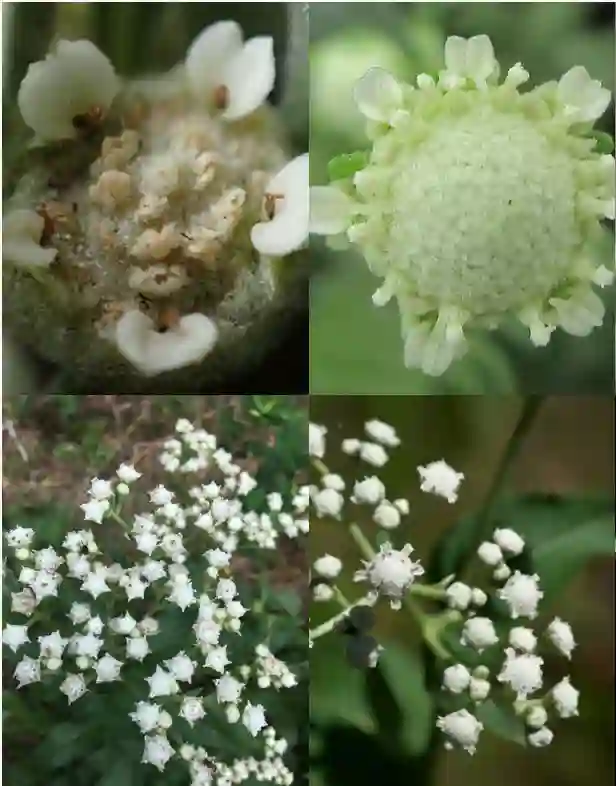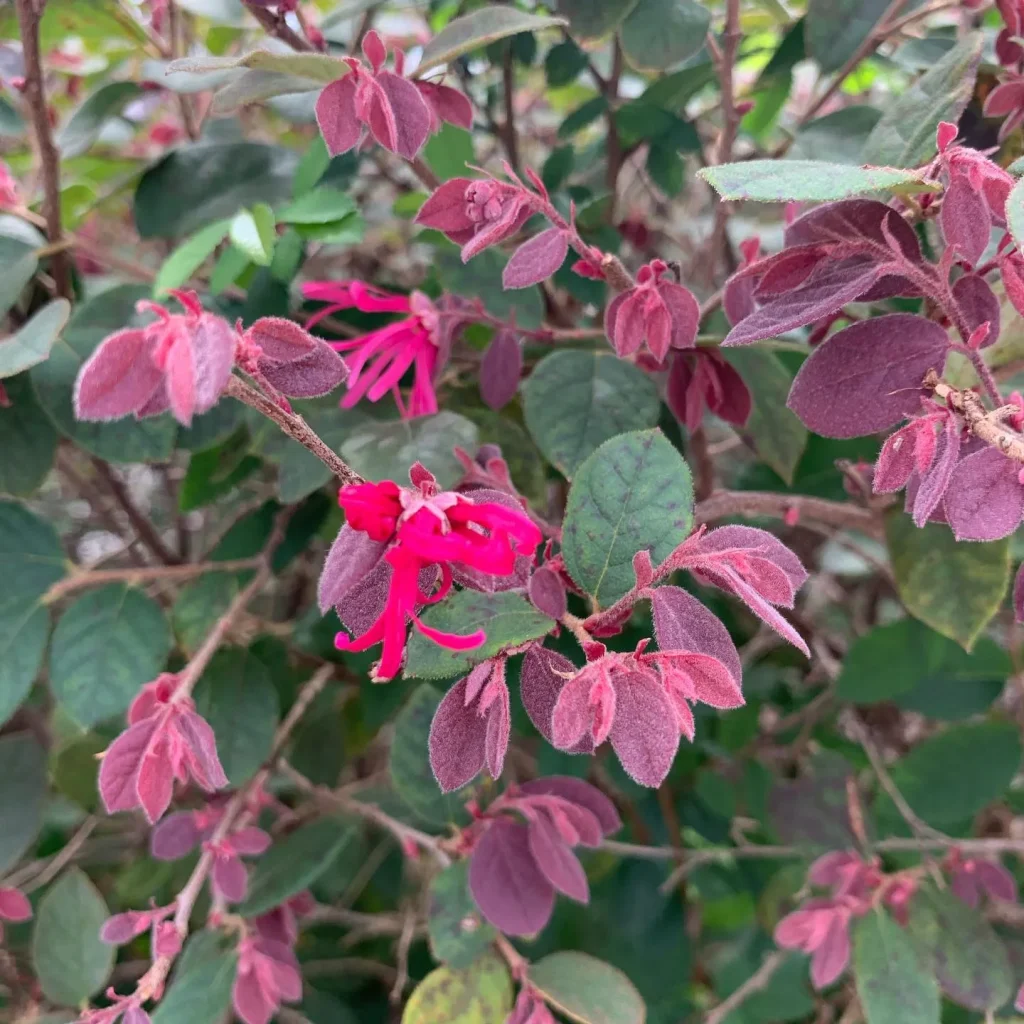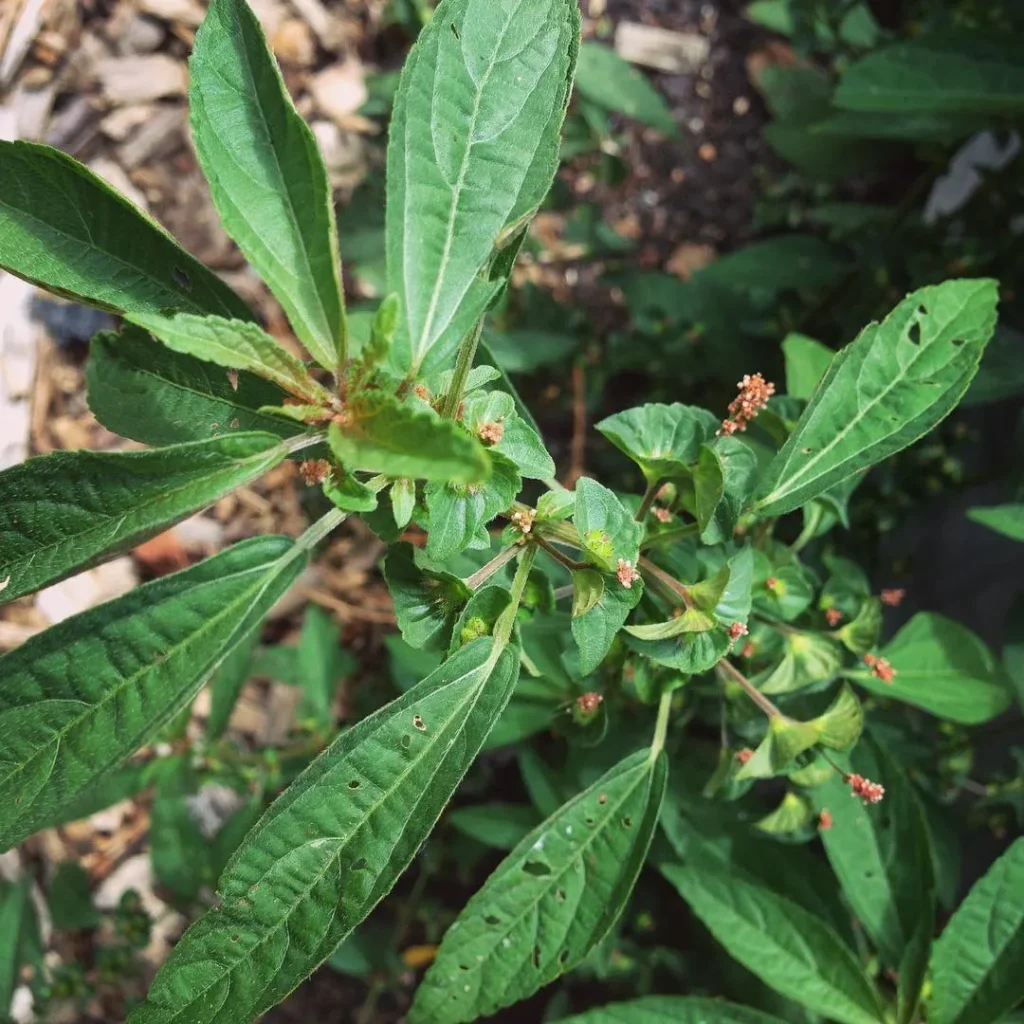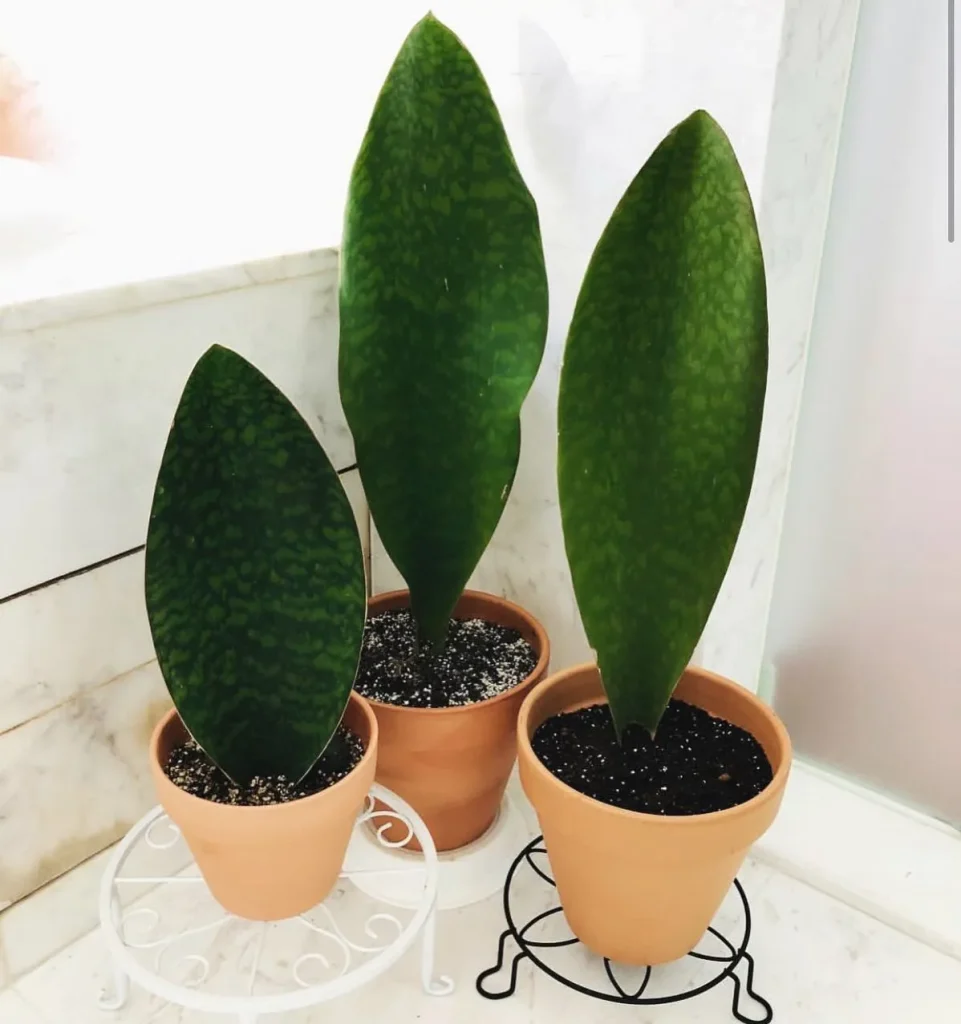What is Sea Holly?
My name is Ferb Vu, and I’ve always been drawn to the unique and the unexpected in the plant world. That’s why I find myself captivated by the genus Eryngium from the Apiaceae family, commonly known as sea holly. These plants, with their spiky, almost extraterrestrial appearance, bring a touch of drama and intrigue to any garden. They’re tough, resilient, and surprisingly versatile, thriving in conditions that would send other plants running for cover.
A Diverse and Global Family
What truly fascinates me about Eryngium is its sheer diversity. This genus boasts over 250 species scattered across the globe, each with its own distinct personality. From the towering, amethyst-hued Eryngium amethystinum of the Mediterranean to the silvery-white Eryngium giganteum that graces the Caucasus mountains, there’s an Eryngium for every taste and climate.
- Eryngium absconditum Esquivel Mattos & C.I.Calviño
- Eryngium agavifolium Griseb.
- Eryngium alismifolium Greene
- Eryngium aloifolium Mart. ex Urb.
- Eryngium alpinum L.
- Eryngium alternatum J.M.Coult. & Rose
- Eryngium amethystinum L.
- Eryngium amorginum Rech.f.
- Eryngium andicola H.Wolff
- Eryngium anomalum Hook. & Arn.
- Eryngium antiatlanticum Jury
- Eryngium aquaticum L.
- Eryngium aquifolium Cav.
- Eryngium arenosum C.I.Calviño & G.A.Levin
- Eryngium argyreum Maire
- Eryngium aristulatum Jeps.
- Eryngium armatum (S.Watson) J.M.Coult. & Rose
- Eryngium aromaticum Baldwin
- Eryngium articulatum Hook.
- Eryngium atacamense A.Padin & C.I.Calviño
- Eryngium atlanticum Batt. & Pit.
- Eryngium babadaghense G.E.Genç, Akalın & Wörz
- Eryngium balansae H.Wolff
- Eryngium baldwinii Spreng.
- Eryngium beckii M.Mend.
- Eryngium beecheyanum Hook. & Arn.
- Eryngium billardierei F.Delaroche
- Eryngium bithynicum Boiss.
- Eryngium bolivianum M.Mend.
- Eryngium bonplandii F.Delaroche
- Eryngium bornmuelleri Nábělek
- Eryngium bourgatii Gouan
- Eryngium brasiliense Constance
- Eryngium buchtienii H.Wolff
- Eryngium bungei Boiss.
- Eryngium bupleuroides Hook. & Arn.
- Eryngium caeruleum M.Bieb.
- Eryngium caespitiferum Font Quer & Pau
- Eryngium calaster Standl.
- Eryngium campestre L.
- Eryngium canaliculatum Cham. & Schltdl.
- Eryngium cardosii Clos
- Eryngium carlinae F.Delaroche
- Eryngium carlinoides Boiss.
- Eryngium castrense Jeps.
- Eryngium cerradense P.Esquivel Mattos & C.I.Calviño
- Eryngium cervantesii F.Delaroche
- Eryngium chamissonis Urb.
- Eryngium × chevalieri Sennen
- Eryngium chubutense Neger ex Dusén
- Eryngium ciliatum Cham. & Schltdl.
- Eryngium columnare Hemsl.
- Eryngium comosum F.Delaroche
- Eryngium constancei M.Y.Sheikh
- Eryngium coquimbanum Phil. ex Urb.
- Eryngium corallinum Mathias & Constance
- Eryngium corniculatum Lam.
- Eryngium coronatum Hook. & Arn.
- Eryngium crassifolium A.Padin & C.I.Calviño
- Eryngium crassisquamosum Hemsl.
- Eryngium creticum Lam.
- Eryngium cuneifolium Small
- Eryngium cylindricum Larrañaga
- Eryngium cymosum F.Delaroche
- Eryngium davisii Kit Tan & Yıldız
- Eryngium deppeanum Schltdl. & Cham.
- Eryngium depressum Hook. & Arn.
- Eryngium desertorum Zohary
- Eryngium dichotomum Desf.
- Eryngium diffusum Torr.
- Eryngium dilatatum Lam.
- Eryngium divaricatum Hook. & Arn.
- Eryngium dorae C.Norman
- Eryngium duriaei J.Gay ex Boiss.
- Eryngium dusenii H.Wolff
- Eryngium ebracteatum Lam.
- Eryngium eburneum Decne. ex Hérincq
- Eryngium echinatum Urb.
- Eryngium ekmanii H.Wolff
- Eryngium elegans Cham. & Schltdl.
- Eryngium eriophorum Cham. & Schltdl.
- Eryngium erzincanicum Yıld.
- Eryngium eurycephalum Malme
- Eryngium expansum F.Muell.
- Eryngium falcatum F.Delaroche
- Eryngium falcifolium Irgang
- Eryngium × fernandezianum Skottsb.
- Eryngium ferrisiae Constance
- Eryngium floribundum Cham. & Schltdl.
- Eryngium fluitans M.E.Jones
- Eryngium fluminense Urb.
- Eryngium foetidum L. Plant FAQs: Ngo Gai Herb – Eryngium Foetidum
- Eryngium foliosum Scheele
- Eryngium fontanum A.E.Holland & E.J.Thomps.
- Eryngium galeottii Hemsl.
- Eryngium galioides Lam.
- Eryngium gentryi Constance & Bye
- Eryngium ghiesbreghtii Decne.
- Eryngium giganteum M.Bieb.
- Eryngium glaciale Boiss.
- Eryngium glaziovianum Urb.
- Eryngium globosum Hemsl.
- Eryngium glomeratum Lam.
- Eryngium glossophyllum H.Wolff
- Eryngium goulartii Urb.
- Eryngium goyazense Urb.
- Eryngium gracile F.Delaroche
- Eryngium gramineum F.Delaroche
- Eryngium grossii Font Quer
- Eryngium guatemalense Hemsl.
- Eryngium haenkei C.Presl ex DC.
- Eryngium hainesii C.C.Towns.
- Eryngium hassleri H.Wolff
- Eryngium heldreichii Boiss.
- Eryngium hemisphaericum Urb.
- Eryngium hemsleyanum H.Wolff
- Eryngium × heteracanthum Teyber
- Eryngium heterophyllum Engelm.
- Eryngium hookeri Walp.
- Eryngium horridum Malme
- Eryngium humboldtii F.Delaroche
- Eryngium humifusum Clos
- Eryngium humile Cav.
- Eryngium huteri Porta & Rigo
- Eryngium ilex P.H.Davis
- Eryngium ilicifolium Desf.
- Eryngium inaccessum Skottsb.
- Eryngium incantatum Lucena, Novara & Cuezzo
- Eryngium integrifolium Walter
- Eryngium iranicum Mozaff.
- Eryngium irgangii D.B.Lucas
- Eryngium irwinii Constance
- Eryngium isauricum Contandr. & Quézel
- Eryngium jaliscense Mathias & Constance
- Eryngium junceum Cham. & Schltdl.
- Eryngium juncifolium (Urb.) Mathias & Constance
- Eryngium × kalotaszegense J.Papp & Ujvárosi
- Eryngium karatavicum Iljin
- Eryngium koehneanum Urb.
- Eryngium kotschyi Boiss.
- Eryngium lacustre Pohl ex Urb.
- Eryngium leavenworthii Torr. & A.Gray
- Eryngium lemmonii J.M.Coult. & Rose
- Eryngium leptophyllum H.Wolff
- Eryngium longifolium Cav.
- Eryngium lorentzii H.Wolff
- Eryngium luzulifolium Cham. & Schltdl.
- Eryngium macracanthum Phil.
- Eryngium macrocalyx Schrenk ex Fisch. & C.A.Mey.
- Eryngium madrense S.Watson
- Eryngium malmeanum H.Wolff
- Eryngium marginatum Pohl ex Urb.
- Eryngium maritimum L.
- Eryngium marocanum Pit.
- Eryngium mathiasiae M.Y.Sheikh
- Eryngium megapotamicum Malme
- Eryngium mesopotamicum T.M.Pedersen
- Eryngium mexiae Constance
- Eryngium × microcephalum Sieber
- Eryngium × mohamedanii Font Quer & Pau
- Eryngium molleri Gand.
- Eryngium moluccanum Steenis
- Eryngium monocephalum Cav.
- Eryngium montanum J.M.Coult. & Rose
- Eryngium montereyense D.W.Taylor & R.E.Preston
- Eryngium multicapitatum Morong
- Eryngium nasturtiifolium Juss. ex F.Delaroche
- Eryngium neei M.Mend.
- Eryngium noeanum Boiss.
- Eryngium nudicaule Lam.
- Eryngium octophyllum Korovin
- Eryngium ombrophilum Dusén & H.Wolff
- Eryngium ovinum A.Cunn.
- Eryngium palmatum Pančić & Vis.
- Eryngium palmeri Hemsl.
- Eryngium palmito Boiss. & Heldr.
- Eryngium paludosum (C.Moore) P.W.Michael
- Eryngium pandanifolium Cham. & Schltdl.
- Eryngium paniculatum Cav. & Dombey ex F.Delaroche
- Eryngium paraguariense Urb.
- Eryngium pectinatum C.Presl ex DC.
- Eryngium pendletonense K.L.Marsden & M.G.Simpson
- Eryngium petiolatum Hook.
- Eryngium phyteumae F.Delaroche
- Eryngium pilularioides Hemsl. & Rose
- Eryngium pinnatifidum Bunge
- Eryngium pinnatisectum Jeps.
- Eryngium plantagineum F.Muell.
- Eryngium plantaginifolium H.Wolff
- Eryngium planum L.
- Eryngium pohlianum Urb.
- Eryngium polycephalum Hausskn. ex H.Wolff
- Eryngium pringlei Hemsl. & Rose
- Eryngium pristis Cham. & Schltdl.
- Eryngium proliferum Brade
- Eryngium prostratum Nutt. ex DC.
- Eryngium proteiflorum F.Delaroche
- Eryngium pseudojunceum Clos
- Eryngium pseudothorifolium Contandr. & Quézel
- Eryngium pugae I.García, Mart.-Ram. & Ocampo
- Eryngium pulchellum Phil.
- Eryngium purpusii Hemsl. & Rose
- Eryngium pusillum L.
- Eryngium pyramidale Boiss. & Hausskn.
- Eryngium racemosum Jeps.
- Eryngium ramboanum Mathias & Constance
- Eryngium rauhianum Mathias & Constance
- Eryngium raulinii Mathias & Constance
- Eryngium regnellii Malme
- Eryngium riparium Larrañaga
- Eryngium rochei Constance
- Eryngium × rocheri P.Fourn.
- Eryngium rojasii H.Wolff
- Eryngium rosei Hemsl.
- Eryngium rostratum Cav.
- Eryngium sanguisorba Cham. & Schltdl.
- Eryngium sarcophyllum Hook. & Arn.
- Eryngium scaposum Turcz.
- Eryngium scirpinum Cham.
- Eryngium sellowii H.Wolff
- Eryngium serbicum Pančić
- Eryngium serra Cham. & Schltdl.
- Eryngium serratum Cav.
- Eryngium smithii Mathias & Constance
- Eryngium sparganioides Clos
- Eryngium sparganophyllum Hemsl.
- Eryngium spinalba Vill.
- Eryngium stenophyllum Urb.
- Eryngium strotheri Constance & Affolter
- Eryngium subacaule Cav.
- Eryngium subinerme (H.Wolff) Mathias & Constance
- Eryngium supinum J.M.Black
- Eryngium tenue Desf.
- Eryngium ternatum Poir.
- Eryngium thorifolium Boiss.
- Eryngium thyrsoideum Boiss.
- Eryngium tricuspidatum L.
- Eryngium triquetrum Vahl
- Eryngium trisectum Wörz & H.Duman
- Eryngium tzeltal Constance
- Eryngium urbanianum H.Wolff
- Eryngium variifolium Coss.
- Eryngium vaseyi J.M.Coult. & Rose
- Eryngium venustum Bartlett ex Constance
- Eryngium vesiculosum Labill.
- Eryngium × visianii Teyber
- Eryngium viviparum J.Gay
- Eryngium wanaturi Woronow
- Eryngium weberbaueri H.Wolff
- Eryngium wiegandii Adamović
- Eryngium woodii M.Mend.
- Eryngium yuccifolium Michx.
- Eryngium zosterifolium H.Wolff
More Than Just a Pretty Face
But Eryngium is more than just a pretty face. These plants are incredibly valuable for pollinators, attracting bees, butterflies, and other beneficial insects to the garden. Their long-lasting blooms also make them excellent cut flowers, adding a touch of wildness and sophistication to any arrangement.
And let’s not forget their resilience. Many Eryngium species thrive in poor, dry soils and can withstand drought conditions with ease. This makes them ideal for xeriscaping and rock gardens, where they can add texture and interest without demanding much in return.
Does Sea Holly Die Back in Winter?
Yes, Sea Holly typically dies back in winter. As a perennial, it may lose its leaves and stems, going dormant when the cold weather arrives. However, come spring, it will sprout new growth from the base. It’s a good idea to cut back the dead stems in late winter or early spring to make way for the new growth.
Where to Buy Sea Holly Plants?
You can find Sea Holly plants at most garden centers and nurseries, especially those that specialize in perennials. Online plant retailers also offer a wide selection of Sea Holly varieties. When buying online, make sure to purchase from reputable sellers to ensure the plants are healthy and true to type.
Does Sea Holly Spread?
Sea Holly can spread, but it’s not invasive. The plant can form clumps over time, gradually expanding in width. Some varieties may self-seed, leading to new plants growing around the garden. If you don’t want it to spread, you can deadhead the flowers before they set seed.
Can You Dry Sea Holly?
Yes, you can dry Sea Holly. Its spiky flowers and stems make excellent additions to dried flower arrangements. To dry Sea Holly, cut the stems when the flowers are fully open and hang them upside down in a cool, dark, and dry place. This method helps retain the color and shape of the flowers.
Do Deer Eat Sea Holly?
Sea Holly is generally deer-resistant due to its spiny leaves and stems. Deer tend to avoid plants with tough, spiky foliage, making Sea Holly a good choice for gardens where deer browsing is a problem.
Does Sea Holly Bloom the First Year?
Sea Holly usually blooms in its second year. When grown from seed, the first year is typically spent developing strong roots and foliage. However, if you purchase a well-established plant from a nursery, it might bloom in the first year after planting.
Does Sea Holly Come Back Every Year?
Yes, Sea Holly is a perennial, so it comes back every year. After dying back in winter, it re-emerges in spring. With proper care, it will continue to thrive and produce beautiful blooms each year.
Does Sea Holly Need Full Sun?
Sea Holly thrives in full sun. It requires at least 6 hours of direct sunlight daily to produce its best blooms. It can tolerate some partial shade, but too much shade can lead to fewer flowers and weaker growth.
Does Sea Holly Self-Seed?
Some varieties of Sea Holly can self-seed, meaning they will drop seeds after flowering, leading to new plants the following year. If you want to prevent self-seeding, you can deadhead the flowers before they set seed.
How Tall Does Sea Holly Get?
Sea Holly varies in height depending on the variety. Most types grow between 1 to 4 feet tall. The taller varieties are perfect for adding height to the back of a border, while shorter varieties can be used in the front.
How to Collect Sea Holly Seeds?
To collect Sea Holly seeds, allow the flowers to fade and dry on the plant. Once the seed heads are dry and brown, cut them off and place them in a paper bag. Shake the bag to release the seeds, and then store them in a cool, dry place until you’re ready to plant.
How to Grow Blue Sea Holly?
Growing Blue Sea Holly is relatively easy. Start with well-draining soil and a location that gets full sun. Plant the seeds or seedlings in spring, spacing them about 18 inches apart. Water them regularly until they are established, but avoid overwatering. Once established, Sea Holly is drought-tolerant and requires little maintenance.
How to Propagate Sea Holly?
Sea Holly can be propagated by seed, division, or root cuttings. The easiest method is to divide mature plants in spring or autumn. Simply dig up the plant, separate it into smaller sections with roots attached, and replant them. Root cuttings can also be taken in late autumn or winter.
Is Sea Holly Poisonous?
Sea Holly is not considered poisonous to humans or pets. However, like many plants, it’s a good idea to keep it out of reach of pets and children who might be tempted to chew on its spiky leaves or flowers.
Sea Holly vs. Globe Thistle
Sea Holly and Globe Thistle are often confused due to their similar appearance. Both have spiky, ball-shaped flowers, but Sea Holly typically has blue or silver blooms and more intricate, jagged leaves. Globe Thistle, on the other hand, has rounder, more globe-like flowers and simpler leaves. Both are excellent for attracting pollinators and add unique texture to gardens.
How to Care for Sea Holly?
Caring for Sea Holly is straightforward. Ensure it’s planted in well-draining soil and gets plenty of sunlight. Water it sparingly once established, as it prefers drier conditions. Prune back the dead foliage in late winter or early spring, and apply a light layer of mulch to protect the roots during winter.
What to Plant with Sea Holly?
Sea Holly pairs well with other sun-loving, drought-tolerant plants. Consider planting it alongside Lavender, Russian Sage, or ornamental grasses for a stunning display. Its blue flowers contrast beautifully with yellow or orange blooms like those of Black-eyed Susans or Coreopsis.
A Gardener’s Delight
For me, cultivating Eryngium is a rewarding experience. I love watching their spiky foliage emerge in spring, followed by the dramatic appearance of their cone-like flowerheads. They’re a constant source of fascination, changing in color and texture throughout the seasons.
Whether you’re a seasoned gardener or just starting out, I encourage you to give Eryngium a try. These unique and captivating plants will bring a touch of wild beauty and resilience to your garden, rewarding you with their stunning presence for years to come.
If i die, water my plants!



